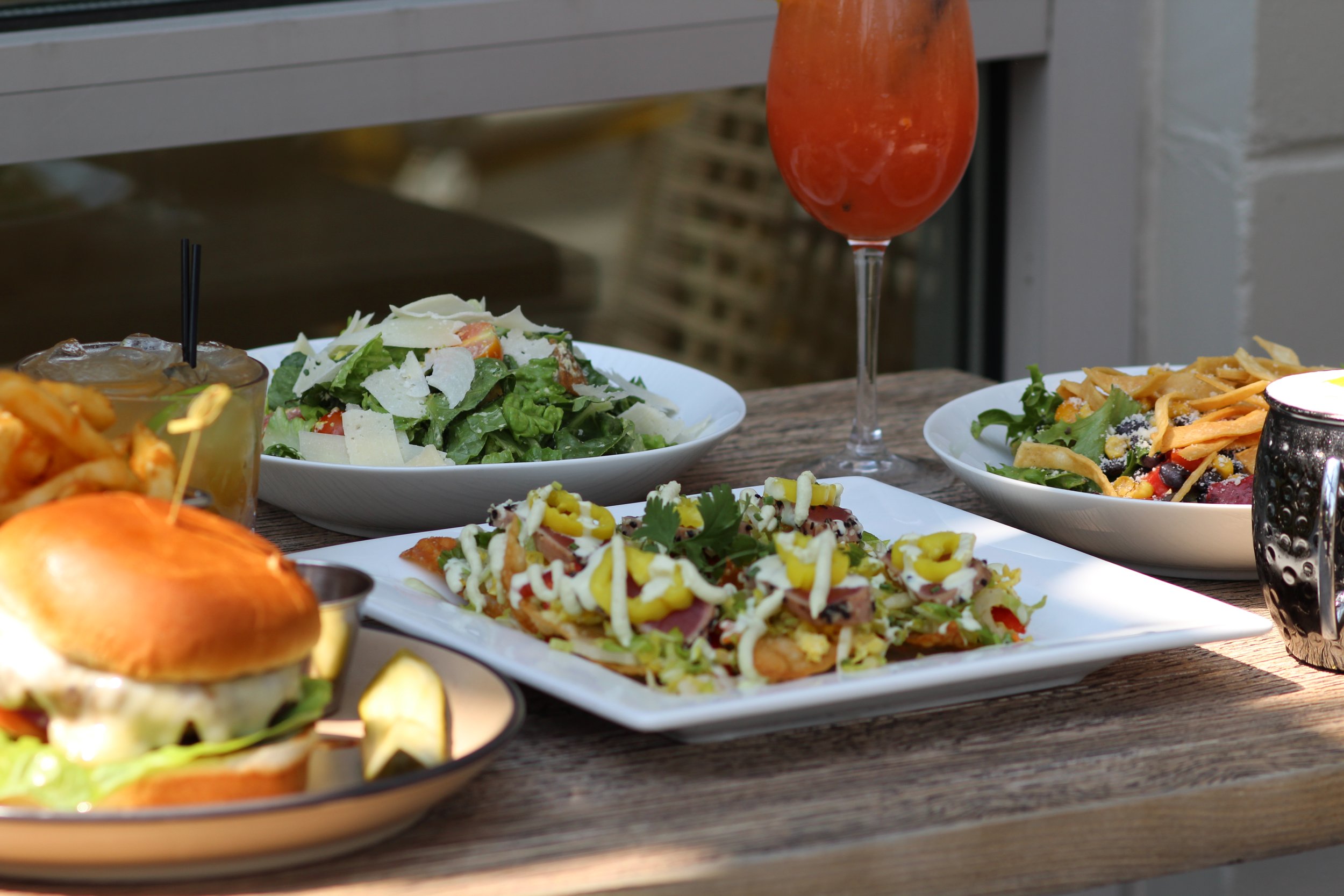Savor Genuine Eastern Cuisine With a Pan-Asian Twist for a Cooking Adventure
Starting a cooking journey via genuine Asian cuisine, improved with a Pan-Asian twist, uses an one-of-a-kind opportunity to explore the rich tapestry of flavors that specify the region's diverse cooking customs. This experience welcomes you to relish the exquisite equilibrium of tastes-- pleasant, salty, spicy, and sour-- balanced by aromatic herbs and flavors. Envision the cutting-edge blend of Thai curry and ramen or the unanticipated joy of sushi burritos. As you contemplate these enticing recipes, take into consideration the social stories and historic impacts that shape them, each bite using a tale waiting to be found.

Exploring Pan-Asian Tastes
In the realm of global gastronomy, Pan-Asian food sticks out for its amazing variety and the harmonious interaction of tastes from different Oriental cultures. This culinary method commemorates the distinct active ingredients and rich traditions discovered across the continent, developing a tapestry of tastes that is both satisfying and appealing. Key to Pan-Asian food is its ability to stabilize different flavors-- pleasant, salty, spicy, and sour-- while highlighting the quality and top quality of each component.
From the umami-rich soy sauce of Japan to the intense chili peppers of Thailand, Pan-Asian food offers a considerable palette of tastes. These components are typically incorporated in inventive methods, boosting dishes with layers of complexity. For example, making use of fragrant herbs such as lemongrass and cilantro, usual in Vietnamese and Thai cuisine, adds a rejuvenating illumination to recipes, while the incorporation of coconut milk provides a luscious, abundant appearance.
The emphasis on fresh produce and fragrant flavors makes certain that each dish is not just a feast for the palate but also for the senses. Pan-Asian cuisine welcomes diners to get started on a cooking trip, checking out the large and differed landscapes of Eastern gastronomy with every bite.
Combination Recipes to Try
While Pan-Asian food is commemorated for its standard tastes, the modern-day culinary landscape is increasingly embracing blend recipes that mix these traditional aspects with influences from other regions. This cutting-edge approach not just honors the rich heritage of Eastern culinary arts yet likewise introduces unique taste experiences that interest contemporary tastes buds.
A prime instance of such a combination recipe is the Korean-Mexican taco, where marinaded bulgogi beef is wrapped in a cozy tortilla, covered with kimchi and a hot gochujang-infused salsa. This combination weds the bold, savory flavors of Korea with the vibrant, fresh elements of Mexican cuisine. Similarly, sushi burritos have actually gained popularity, integrating the fragile artistry of Japanese sushi with the passionate, hand-held convenience of a burrito, frequently including blend active ingredients like tempura shrimp and avocado with a drizzle of wasabi mayo.
Another notable dish is Thai curry ramen, which instills the velvety, aromatic seasonings of Thai curry into the comforting broth of standard Japanese ramen, creating a harmonious blend that tantalizes the senses. These fusion recipes extend beyond simple novelty; they represent a culinary dialogue between societies, urging expedition and development in the globe of Pan-Asian food.
Vital Active Ingredients and Spices
To genuinely value Pan-Asian cuisine, one need to comprehend the crucial ingredients and flavors that develop its structure. This varied cooking design attracts from an abundant tapestry of Eastern practices, employing a harmonious mix of textures and tastes. Trick ingredients consist of soy sauce, fish sauce, and oyster sauce, which impart a tasty umami depth vital to Oriental meals. Corresponding official source to these are rice vinegar and mirin, providing a delicate level of acidity and sweet taste.
Aromatic components are pivotal, with garlic, ginger, and lemongrass being common throughout different Pan-Asian recipes. These active ingredients give a great smelling base that improves the complexity of tastes. Flavors such as celebrity anise, cardamom, and cinnamon present warmth and personality, echoing influences from regions like China and India.

Cooking Techniques and Tips
Grasping the art of Pan-Asian food needs familiarity with its unique cooking methods, each adding to the vivid tapestry of tastes this cooking tradition is celebrated for. Central to these methods is the stir-fry, a rapid food preparation technique that preserves the nutritional stability and vibrant shades of ingredients. Making use of a wok, the stir-fry method permits for even warmth circulation, vital for attaining the characteristic texture and flavor balance of Pan-Asian meals.
One more basic strategy is steaming, particularly common in Chinese cuisine. This mild approach preserves the all-natural tastes and nutrients of active ingredients, making it excellent for seafood and vegetables. Dumplings, a precious staple, frequently profit from steaming, causing soft, delicious appearances.
Cooking, additionally essential, imparts smoky midsts to meals such as Korean bulgogi or Japanese yakitori (pan asian dining Islamabad). This method typically entails seasoning components, permitting tastes to pass through deeply prior to cooking over an open fire or hot plate
Finally, mastering the art of balancing tastes-- wonderful, sour, salty, bitter, and umami-- is vital. Appropriately layering these components can boost a dish from average to phenomenal, using a complex and pleasing culinary experience that embodies the significance of Pan-Asian cuisine.
Eating Experiences Worldwide
Across the globe, Pan-Asian food uses an exceptional dining experience, commemorated for its rich tapestry of tastes and dynamic discussions. This culinary phenomenon has transcended social boundaries, capturing the hearts and palates of food enthusiasts worldwide. In multicultural cities like New York, London, and Sydney, Pan-Asian dining establishments work as melting pots where cooking customs from Thailand, Japan, China, and beyond assemble, supplying restaurants with a diverse mix of dishes that highlight look these up the region's variety.
The worldwide charm of Pan-Asian cuisine hinges on its ability to provide both credibility and development. Chefs skillfully wed typical active ingredients such as lemongrass, soy sauce, and miso with modern techniques, causing meals that are both refreshingly new and familiar. This fusion permits diners to start a cooking journey that values heritage while accepting modernity.
Additionally, eating experiences are boosted with thoughtfully developed environments that mirror the values of Pan-Asian visual appeals. From minimal Japanese-inspired insides to lively Thai-themed spaces, each dining establishment provides an one-of-a-kind ambiance that complements the cooking offerings. Therefore, customers are not simply taking in a dish but partaking in a cultural experience, making Pan-Asian eating a truly international phenomenon.
Final Thought
The expedition of Pan-Asian cuisine provides a profound understanding of the intricate interaction of flavors and cooking practices across Asia. By welcoming blend meals such as Thai curry ramen and sushi burritos, the culinary trip not just highlights the adaptability of typical components but likewise showcases ingenious modern-day methods. This gastronomic journey, improved by crucial seasonings and cooking methods, offers a special possibility to appreciate the social diversity and cooking virtuosity that specify Pan-Asian cuisine on a worldwide scale.
Getting started on a culinary journey via genuine Eastern food, improved with a Pan-Asian spin, offers an unique chance to check out the rich tapestry of tastes that define the area's diverse culinary traditions.In the world of worldwide gastronomy, Pan-Asian food stands out for its remarkable diversity and the unified interplay of tastes from various Eastern societies. Trick to Pan-Asian food is its capacity to balance contrasting flavors-- pleasant, salted, spicy, and sour-- while highlighting the freshness and top quality of each ingredient.
